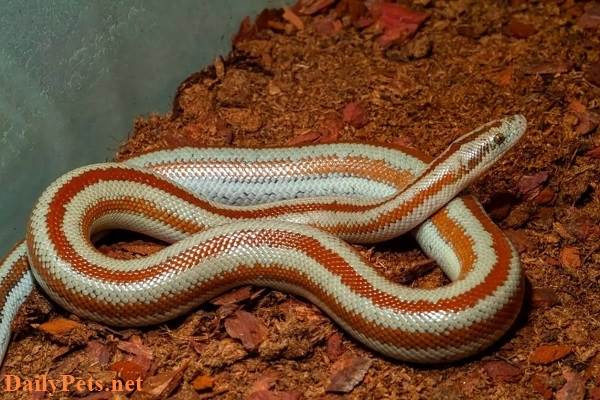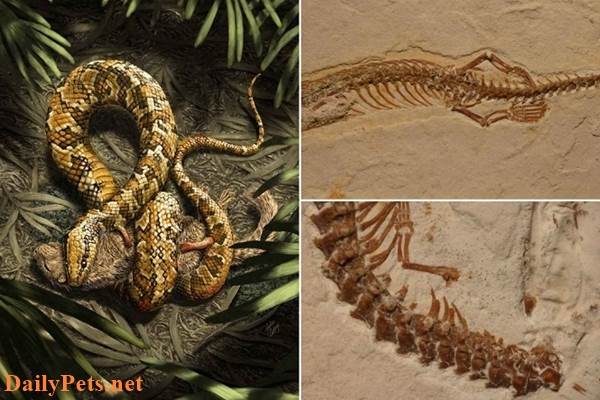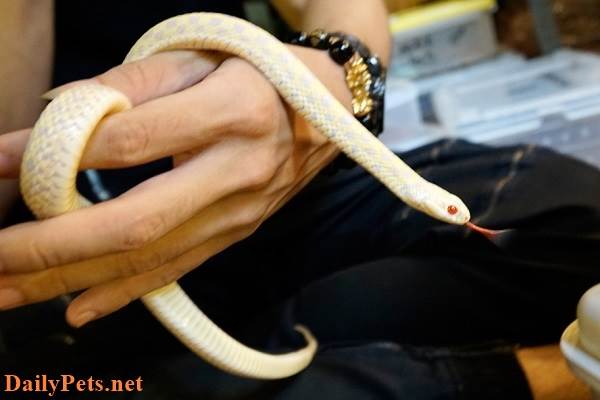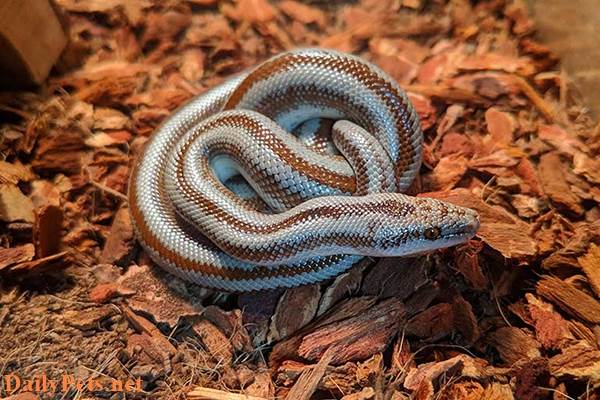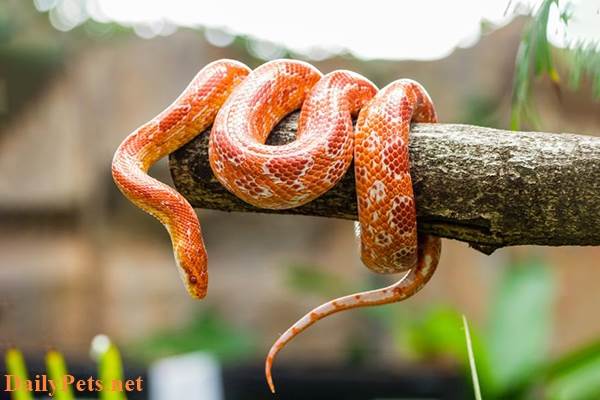Therefore, the Red-tailed Boa python is now loved by many people as a pet.
General information about Red Tail Boa
- The Red Tail Boa is native to Brazil in the rain forests and lowlands.
- Distribution: Found widely throughout northern and central South America, east of the Andes mountains
- Pythons can grow up to 2-3m
- Weight 22kg when living full of nutrients.
- Lifespan: 20-30 years in captivity if well cared for.
- Red-tailed pythons are popular pets because of their docile temperament. This is not a rabid python. But they can cause injury to the owner by constricting your arms or legs if contact is not careful. Pythons can bite your hand if they think your hand is food.
Red-tailed Boa Python shape characteristics
Red-tailed Boa pythons have a color and pattern that varies depending on the area where they live. However, most are brown, gray, or cream with a saddle pattern. Closer to the tail, these patterns become clearer and denser.
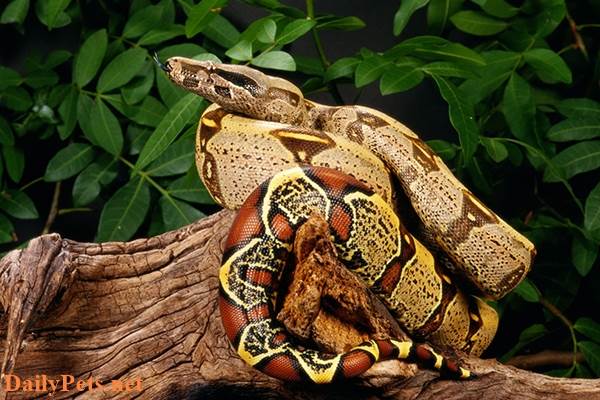
Red-Tailed Boa python.
Some individuals present with pigmentation disorders, such as albinism. Although these individuals are rare in the wild, the Red-tailed Boa is very popular in captivity due to selective breeding.
Red-tailed Boa pythons have obvious sexual dimorphism. Females are usually larger than males both in length and girth. However, males have longer tails to accommodate Hemipenes.
Red-tailed Boa pythons are usually smaller in size than brocade pythons. The largest adult Red-tailed python is 3.6m long, while the adult Red-tailed Boa python can be up to 6.5m long. Besides, the brocade python has a different grid pattern than the Red-tailed python.
Personality Traits of the Red-tailed Boa
Red-tailed Boa pythons are usually solitary and do not interact with other snakes unless they want to mate. They are mostly nocturnal but can also be active during the day when nighttime temperatures are too low.
The Red-tailed Boa attacks immediately when it perceives a threat. Their bites can be painful, especially from large Red-tailed Boa pythons, but are rarely dangerous to humans.
Like all other snakes and pythons, the Red-tailed Boa is limited in activity during the molting cycle. Therefore, at this stage, they are usually more defensive.
The Red-tailed Boa python is a species that gives birth instead of laying eggs like other snakes. They usually breed in the dry season between April and August.
How to care for a Red-tailed Boa python
This is a large python species, strong, and lives long when they grow up; the cost of feeding them also increases, the cage is also large, and the cleaning time is longer, so before buying the Red-tailed Boa python. About raising, you should consider carefully.
What do Red-tailed Boa pythons eat?
The Red-tailed Boa mainly feeds on rats and other rodents. You need to be careful not to feed them in the cage; instead, take them to a closed cage area and then feed them. This will reduce the chances of them thinking you are food and accidentally biting you or eating the substrate in the cage themselves.
Red-tailed Boa’s cage
Red-tailed pythons do not need too much space to live. A tank of about 2.4×1.2×1.2m is suitable for an adult Red-tailed Boa. It should be noted that the cage must have a strong lock or latch to ensure the safety of them as well as those around them.
Line the floor with easy-to-clean materials such as paper towels, paperboard, etc. You also need to put some hidden boxes for them to curl up whenever they want.
Red-tailed Boa pythons come from a tropical environment, so you should maintain the necessary humidity in the cage. They also need a large bowl of water to both drink and soak.
The bottom of the house should be kept at about 32 to 35 degrees Celsius. The rest of the area can stay above 26 degrees during the day and drop below 26 degrees at night.
The Red-tailed Boa does not need a strong UVB light source, but a UVB light is a great choice if you want to provide additional Red-tailed Boa light during the day.
Common diseases of Red-tailed Boa Pythons
Red-tailed Boa pythons often suffer from common diseases such as scab rot, skin blistering, respiratory diseases, or IBD virus infection. This is a deadly virus, similar to HIV in humans. Therefore, you need to take them to the veterinarian as soon as you see any unusual signs.
Should you adopt a Red-tailed Boa Python?
The Red-tailed boa is a large, strong, long-lived snake, and it’s not for everyone. Feeding them can become more expensive as they get older and their cage cleaning time increases. Therefore, make sure you are prepared and know what to expect before bringing any pets home, especially those with a lifespan of up to 30 years.
